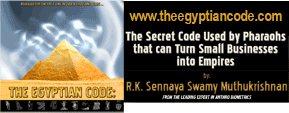
Energy Fields
Inside Outside April 2005
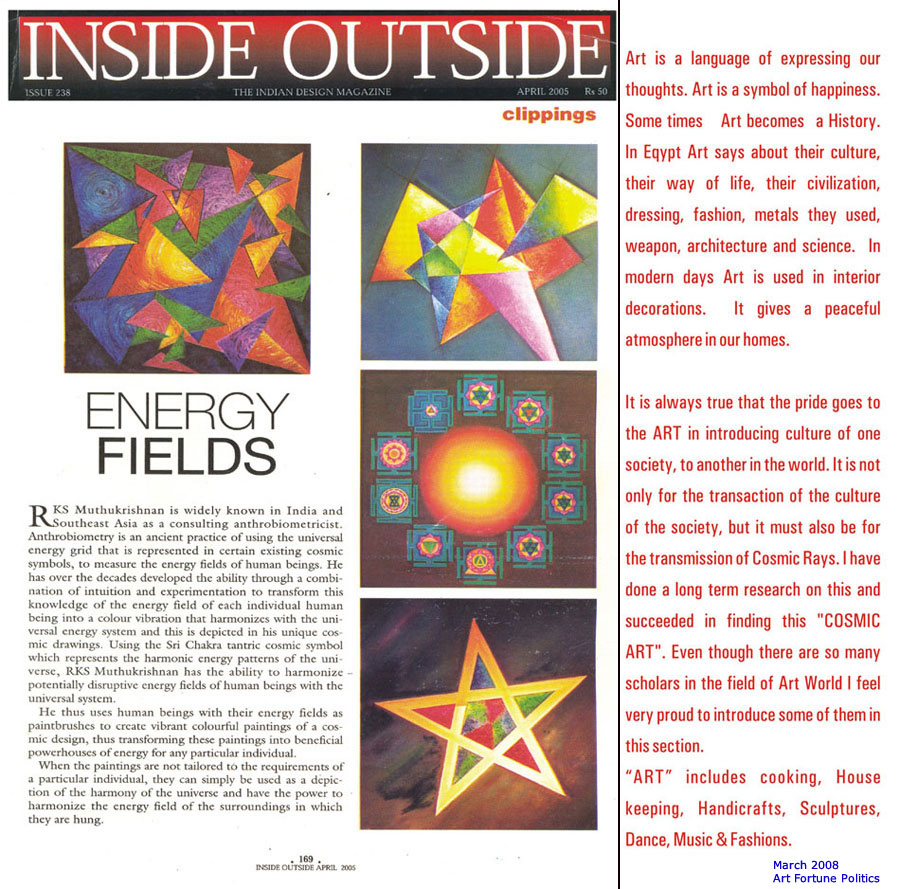
The Letter from Kadavur Palace
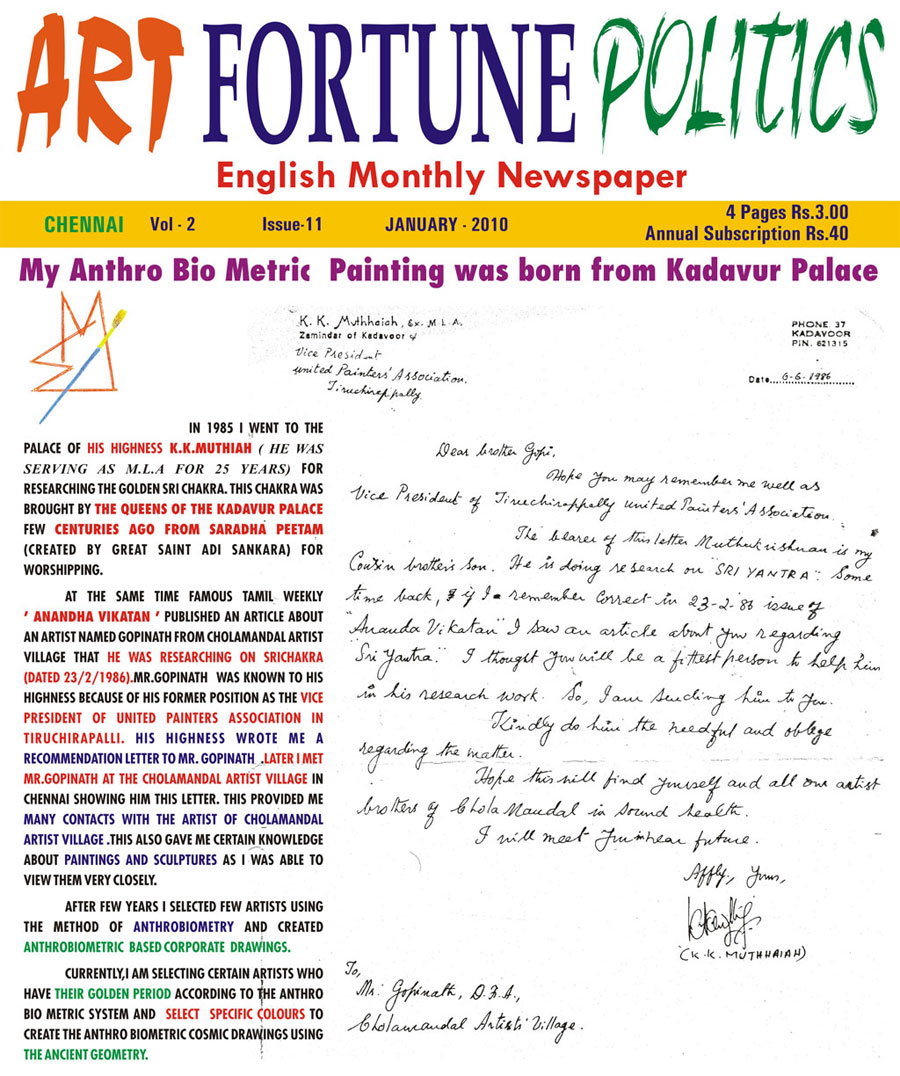
Jain Culture Painting
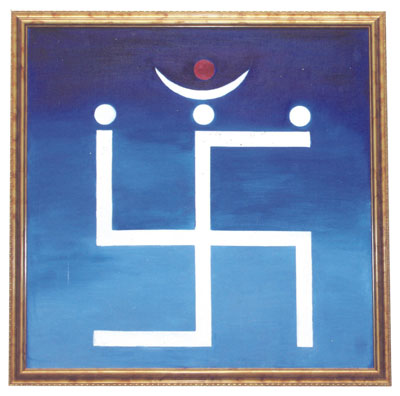
This is a 10, 000 year old concept. It is the great Jain Symbol. It is made by the Anthro Biometric system.
Message to the followers of Pythagoras…
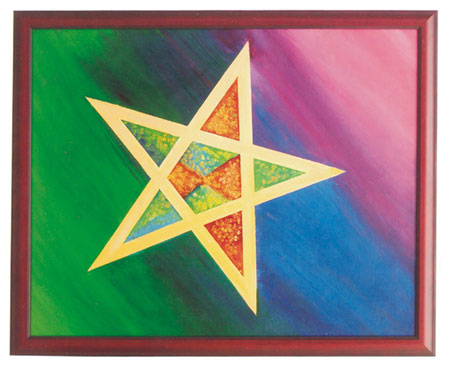
This types of Pentagram painting are drawn in Anthro Bio Metric Cosmic Painting Method
Pentagram: Pentagrams take either pentagonal or star shape. Their symbolism is manifold, but is always based upon that of the number Five.Which expresses the conjunction of inequalities. The five points of the pentagram come together in fruitful marriage of three(the male principle) with two (the female principle). In this context, the pentagram symbolizes herma-phrodism. Pentagrams were used as recognition signs between members of the same group or society. As for example the followers of Pythagoras in Classical antiquity. The pentagram united them: it was one of the keys to Higher Knowledge and opened the door to what was secret.
For Reading in Detail
Symbols or Geometry of a culture which has faded away through the years
Jainism had spread across many regions in India. In south India the rulers of the past followed Jainism’s religious and cultural principles for the benefit of their people. Jains, most importantly had the unique way of using nature for medicine, astronomy, metallurgy, pedology, agriculture etc. In other words jains were able to control nature. They were advisors to the kings but did not ask anything in return for their work. This was because they were in nirvana.
When there is a change in the rule of a country i.e. if a king is overthrown or defeated, the new king wanted the people to follow his religion and culture. So, the change in culture inside a kingdom caused the procedures and methods of people following Jain culture mix with what was forced upon them. This created adulteration in the Jain culture.
From these adulterated cultures spread across the country, we have taken the pure jain symbols and painted them using the Anthro biometric method.
If you have any symbols or geometry of a culture which has faded away through the years, Please do send it to our research centre by letter or by e-mail. This would be beneficial for the people.
RKSM. Sennaya Swamy Naickar
Anthro Biometric and Ancient Culture Research and Development Foundation
Fax: +91 - 44 - 42100151
Email: interesting32@gmail.com
Smar Hara Yantra
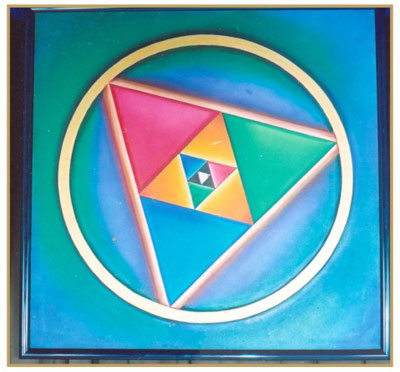
Smar Hara Yantra (Detail): “ The Remover of Desire”
The circle is the latent KUNDALINI shakti which when aroused can penetrate beyond the successive plans of inwardness illustrated by the five male and female triangles which correspond to the five psychic sheaths that envelope the inner most self.
Cosmic Rays Emerges From The Bindu
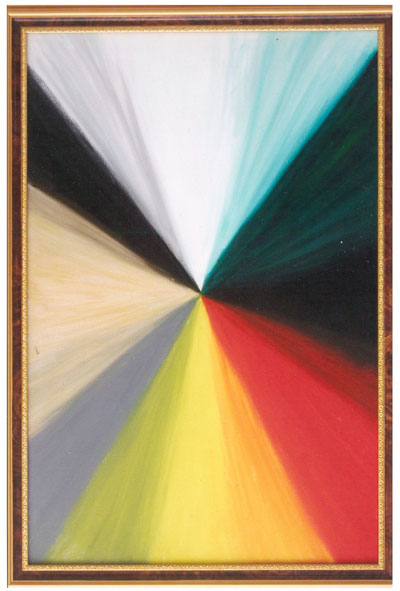
Every cosmic energy meets in the bindu, Every cosmic rays emerges from the bindu
By the time the Art work has completed it was found to be rare cosmic time factor. The colour used in this Cosmic systems can be taken inside the body through step by step meditation. These Cosmic meditation Drawings are helpful in future planning and for having peace of mind.
Art Fortune Politics September 2009
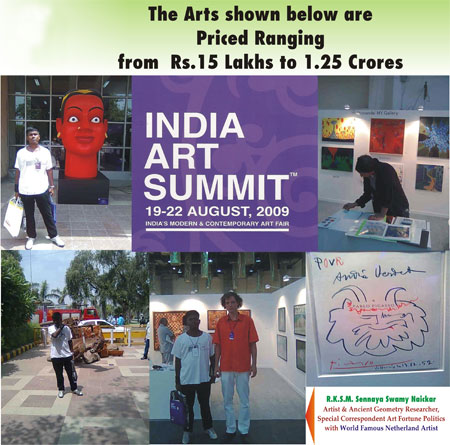
R.K.S.M. Sennaya Swamy Naickar,
Artist & Ancient Geometry Researcher, Special Correspondent Art Fortune Politics with World Famous Netherland Artist.
R.K.S.M. Sennaya Swamy Naickar
with Dr. V.P. Rao
For Reading in Detail
Jain Culture Paintings

Jain Culture in Anthro Biometric System
For Reading in Detail
Arts And Crafts Of Ancient Egypt
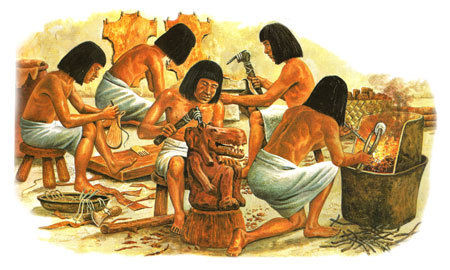
Painters, sculptors and carpenters were all considered craftsmen in ancient Egypt, although there was not a separate word for artist. Each was a specialist, and it took several specialists to create a piece. To make a statue it needed a quarryman to cut the stone block, a sculptor to shape it, an inscriber to add the crucial hieroglyphs, a metalworker to insert the rock crystal and amethyst eyes and a painter to finish it, for all statues were painted.
ARTISTS
The names of the artists whose works filled the tombs, temples and palaces of ancient Egypt are almost all lost because they did not sign their names. We know one name by accident - in one tomb scene he painted himself decorating a statue. An admirer later copied the painting and added his name: Houy.
In tomb paintings craft workshops look clean and well-organized. In reality they must have been hot, noisy and crowded with crucibles of copper or pots of glue smoking over charcoal fires, dust from grinding drills filling the air and half-finished pieces passing from one worker to another. Most workshops were attached to temples or palaces, the craftsmen making pieces in their own time to sell privately.
Rameses II as a Child (Sculpture)
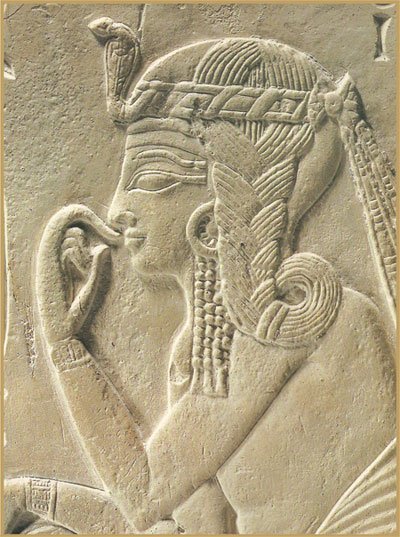
Limestone Relief of Rameses II as a Child (Louvre, Paris). Courtesy of The Bridgeman Art Library.
Rameses was established as the heir to the throne at an early age, to prevent any disputes over his succession, and while it is unusual to find images of him while he was just Prince Regent, carvings and paintings do exist. This relief is fashioned out of limestone by the method known as low relief. This meant that the surface of the rock was left as a background, and the image was carved as a convex projection. This style was favoured by Seti I - Rameses himself preferred the cruder style of sunk relief.
Cosmic Pencil Drawing – Mahatma Gandhi
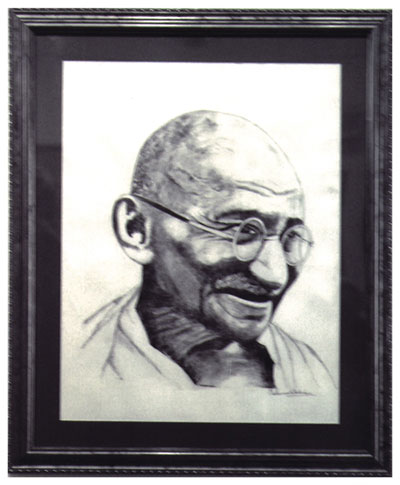
Art is a beautiful way of expressing mind. Art reveals the real thought of the mankind. Each every person his is own style of hand writing. In the same way artists are also having different styles. They cannot change their style. We can recognize the style of every artists at a glance. Their style cannot vary only in the portraits. In portraits they have to express the same figure like the models. In natural arts, of course style changes according to the artist’s view. The paint,the base, the model which the artist selects, the brush, the knife which the artists uses, decides the art.
Swastikas from Mohenjodaro [ 2500 BC ] Drawn using the Anthro Biometric Method
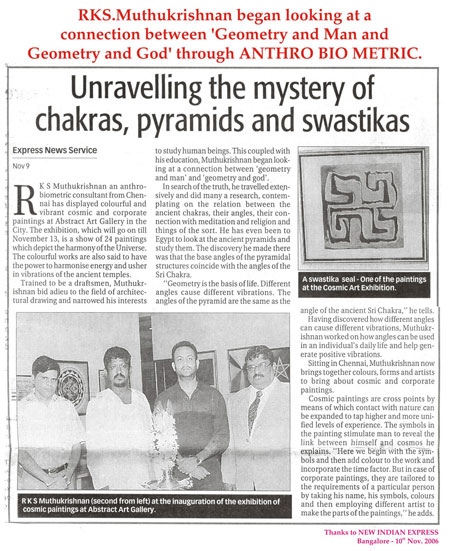 RKS Muthukrishnan an anthro-biometric consultant from Chennai has displayed colourful and vibrant cosmic and corporate paintings at Abstract Art Gallery in the City. The exhibition, which will go on till November 13, is a show of 24 paintings which depict the harmony of the Universe. The colourful works are also said to have the power to harmonise energy and usher in vibrations of the ancient temples.
RKS Muthukrishnan an anthro-biometric consultant from Chennai has displayed colourful and vibrant cosmic and corporate paintings at Abstract Art Gallery in the City. The exhibition, which will go on till November 13, is a show of 24 paintings which depict the harmony of the Universe. The colourful works are also said to have the power to harmonise energy and usher in vibrations of the ancient temples.
Trained to be a draftsmen, Muthukrishnan bid adieu to the field of architectural drawing and narrowed his interests to study human beings. This coupled with his education, Muthukrishnan began looking at a connection between ‘geometry and man’ and ‘geomatery and god’.
Thanks to New Indian Express Bangalore 10 November 2006
For Reading in Detail






